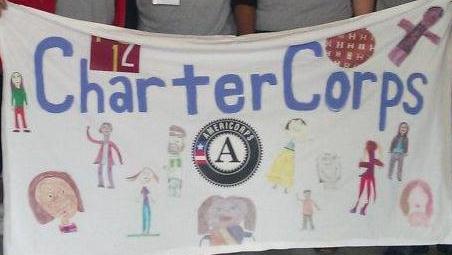By: Leah
Mr.
Ben’s science class our 4th graders have just finished a unit on
ecosystems in which they made their very own “ecocolumns”. These columns are
made of a terrarium and aquarium joined into one entity, and they represent a
mini but well-functioning model of an interdependent ecological system. The
students have been taking care of their ecololumns for several weeks now, and
it has been interesting to see these things sprout right before our eyes.
This
terrarium needs a haircut.
Students
first made the terrarium by plugging an upside-down soda bottle with gravel and
dirt. They then added the soil and planted some rye, alfalfa, and mustard seed
in designated areas within the soil. After watering and charting the growth of
the plants, the students added crickets and isopods (rolly pollies) to the mix.
Mr. Ben got the honor of giving out isopods, and I was in charge of the cricket
box (I may or may not have whimpered during cricket distribution day).
Underneath
the terrariums we attached the aquariums, which consisted of empty soda bottles
with the tops cut off. Add a little water, gravel, elodea, and duckweed, and
you have yourself a little ecosystem. We also added fish to the mix, but sadly
many of them went to fish-heaven in the days between storage and use. When it
comes to live science materials, things can’t always be predictable!
Beyond
actually making the ecocolumns, the students also conducted an experiment where
they purposefully polluted certain columns and made others into controls to see
the effects of fertilizer and acid rain on their ecosystems. The end results
were not too drastic, but the students were able to notice even subtle
differences between the ecocolumns and practice their observation skills with
things like the color, texture, height, and size of its contents.
Thirsty,
anyone?
My 4th
graders really enjoyed doing this project, and it was surprisingly simple for
something that conveyed so much information. Students were able to have a
direct, hands-on experience with something that mattered to them (each pair of
students made and “branded” their own ecosystem) and they were able to
visualize a larger concept in the comfort of their own desks. Here’s to good
science!
Beware
the dreaded rolly polly…
P.S. Many
thanks to Mr. Ben for being the class isopod wrangler.



No comments:
Post a Comment